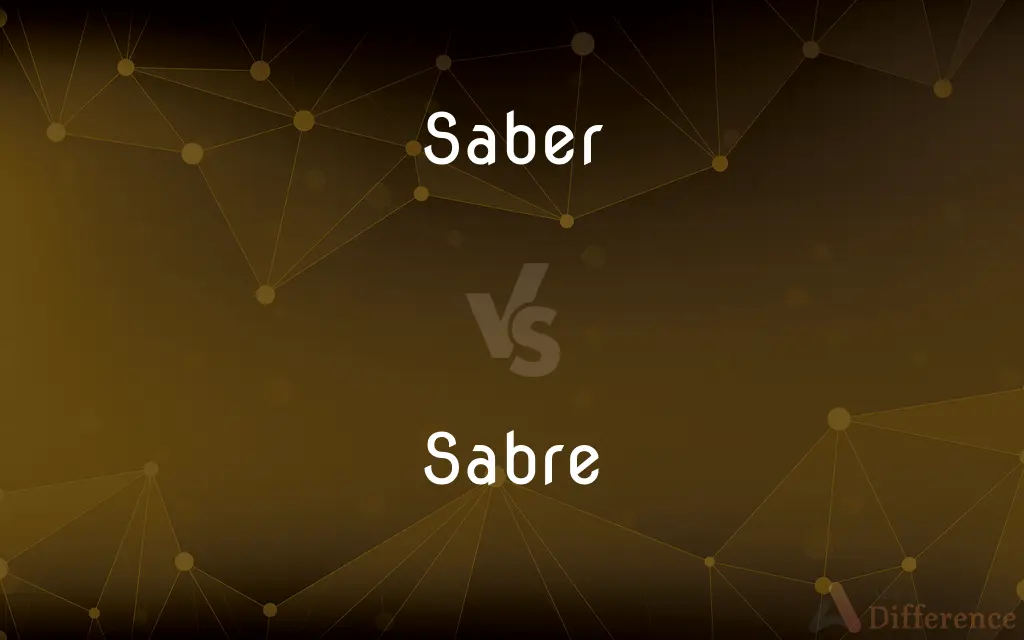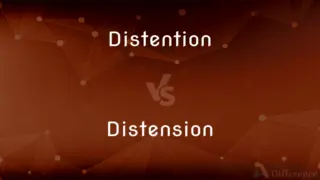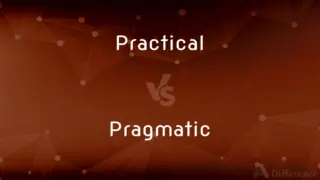Saber vs. Sabre — What's the Difference?
By Tayyaba Rehman & Urooj Arif — Updated on February 22, 2024
"Saber" and "sabre" refer to the same type of curved, single-edged sword, with "saber" being the preferred spelling in American English and "sabre" in British English.

Difference Between Saber and Sabre
Table of Contents
ADVERTISEMENT
Key Differences
The terms "saber" and "sabre" describe a curved, single-edged sword used historically in cavalry charges, differing primarily in their spelling based on regional English variations. In American English, "saber" is the common spelling, aligning with the American tendency to simplify words. British English, however, favors "sabre," reflecting the traditional spellings influenced by French, from which the term originates.
Both spellings refer to the same weapon, characterized by its distinct curved blade designed for slashing, and have been used extensively in military history. The saber/sabre was particularly popular among cavalry units in the 18th and 19th centuries, prized for its effectiveness in mounted combat. The design allows for powerful cuts without the need for precise point work, making it ideal for fast-paced engagements.
Despite the spelling differences, the function and cultural significance of the saber/sabre remain consistent across English-speaking countries. It is often associated with bravery, chivalry, and military tradition, symbolized in ceremonies and military dress uniforms. The saber/sabre has also made its mark in sports, particularly in fencing, where it is one of the three weapons used, emphasizing cutting motions over thrusting.
The choice between "saber" and "sabre" largely depends on the regional dialect of English being used. In literature and historical texts, the spelling might also reflect the period or the specific cultural context being described. Regardless of the spelling, the saber/sabre continues to be a symbol of martial prowess and historical significance.
Comparison Chart
Spelling
Saber
Sabre
ADVERTISEMENT
Origin of Spelling
American English, favoring simplified forms
British English, retaining traditional spellings often influenced by French
Usage
Preferred in the United States
Preferred in the UK and other Commonwealth countries
Historical Context
Used in American military history and literature
Used in British and Commonwealth military history and literature
Association in Sports
Used in American fencing terminology
Used in British fencing terminology
Compare with Definitions
Saber
A curved, single-edged sword used historically by cavalry.
The officer brandished his saber with skill and precision.
Sabre
An object representing historical military elegance.
The antique sabre hung prominently on the wall.
Saber
A tool for ceremonial purposes in various cultures.
The wedding cake was cut with a family heirloom saber.
Sabre
A single-edged sword with a curved blade, used especially in the past by soldiers on horseback.
The cavalryman's sabre gleamed in the sunlight.
Saber
A fencing weapon characterized by slashing motions.
In fencing, the saber bout was fast and intense.
Sabre
A type of fencing weapon that emphasizes cut over thrust.
She excelled in the sabre category, winning several championships.
Saber
A symbol of military rank and tradition.
The newly commissioned officer received a ceremonial saber.
Sabre
A ceremonial item in military and naval traditions.
The officer's sabre was a testament to years of distinguished service.
Saber
An emblem of authority and honor.
The general's saber was adorned with intricate engravings.
Sabre
A symbol of knighthood and chivalry.
He was knighted with a ceremonial sabre, marking his valor.
Saber
(American spelling) sabre.
Sabre
A light sword, sharp along the front edge, part of the back edge, and at the point.
Saber
A heavy cavalry sword with a one-edged, slightly curved blade.
Sabre
A sabre (sometimes spelt saber in American English) is a type of backsword with a curved blade associated with the light cavalry of the early modern and Napoleonic periods. Originally associated with Central European cavalry such as the hussars, the sabre became widespread in Western Europe in the Thirty Years' War.
Saber
A stout sword with a curved blade and thick back.
Common Curiosities
How do you decide whether to use "saber" or "sabre"?
The choice typically depends on whether you are using American or British English.
Is there a difference between a saber and a sabre?
No, "saber" and "sabre" refer to the same weapon, with the difference being in American vs. British spelling.
Why are there two spellings for saber/sabre?
The variation in spelling is due to differences between American and British English conventions.
Is the saber/sabre still used today?
While not used in combat, it remains a ceremonial weapon and is also used in the sport of fencing.
Was the saber/sabre only used by cavalry?
Primarily, yes, due to its design which was suited for mounted combat, but it has also been used by infantry and in ceremonial contexts.
What is the historical origin of the saber/sabre?
The saber/sabre has origins in Middle Eastern and Eastern European warfare, evolving over centuries.
Are replicas of historical sabers/sabres popular among collectors?
Yes, replicas are popular for collectors, historical reenactors, and martial arts practitioners.
Are saber and sabre pronounced the same way?
Yes, both words are pronounced the same way despite the spelling difference.
Can both "saber" and "sabre" be used in fencing?
Yes, both terms are used in the sport of fencing to describe one of the three weapons, with the choice of term depending on the country.
What are the key features of a saber/sabre?
Key features include a curved blade, a single cutting edge, and sometimes a hand guard.
Did pirates use sabers or sabres?
Pirates were known to use a variety of weapons, including sabers/sabres, for close combat.
How is the saber/sabre depicted in literature and film?
It is frequently depicted as a weapon of heroism, honor, and martial skill.
Is there a ceremonial significance to the saber/sabre in modern militaries?
Yes, it is often used in dress uniforms, parades, and ceremonial functions as a symbol of leadership and honor.
Have saber/sabre designs varied significantly over time?
Yes, designs have evolved based on regional influences and changing military tactics.
What is the difference in maintenance between a saber and a sabre?
There is no difference in maintenance; both require regular care to preserve their condition and appearance.
Share Your Discovery

Previous Comparison
Distention vs. Distension
Next Comparison
Practical vs. PragmaticAuthor Spotlight
Written by
Tayyaba RehmanTayyaba Rehman is a distinguished writer, currently serving as a primary contributor to askdifference.com. As a researcher in semantics and etymology, Tayyaba's passion for the complexity of languages and their distinctions has found a perfect home on the platform. Tayyaba delves into the intricacies of language, distinguishing between commonly confused words and phrases, thereby providing clarity for readers worldwide.
Co-written by
Urooj ArifUrooj is a skilled content writer at Ask Difference, known for her exceptional ability to simplify complex topics into engaging and informative content. With a passion for research and a flair for clear, concise writing, she consistently delivers articles that resonate with our diverse audience.















































